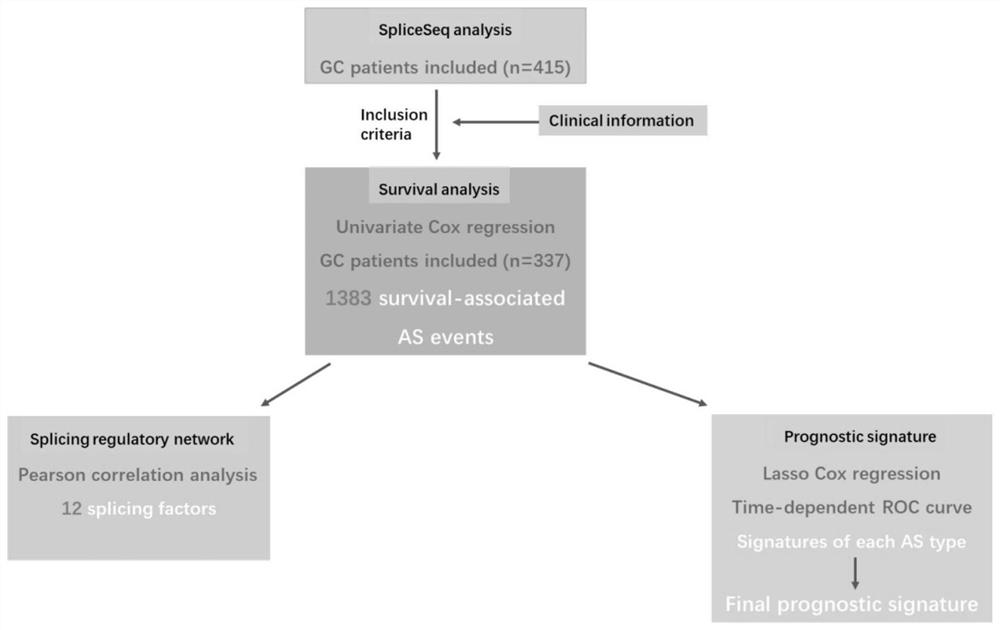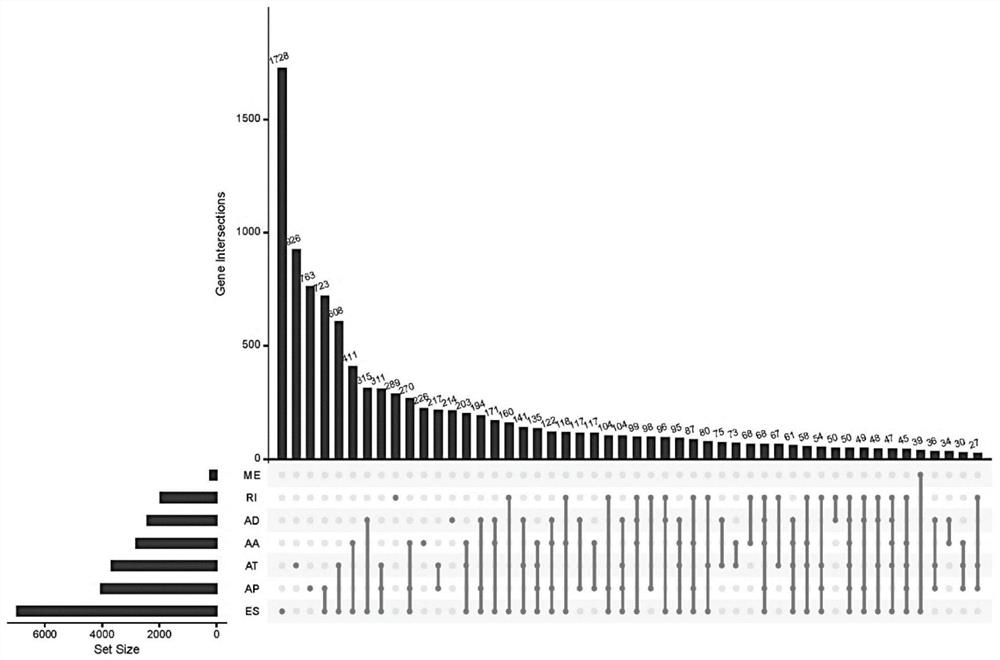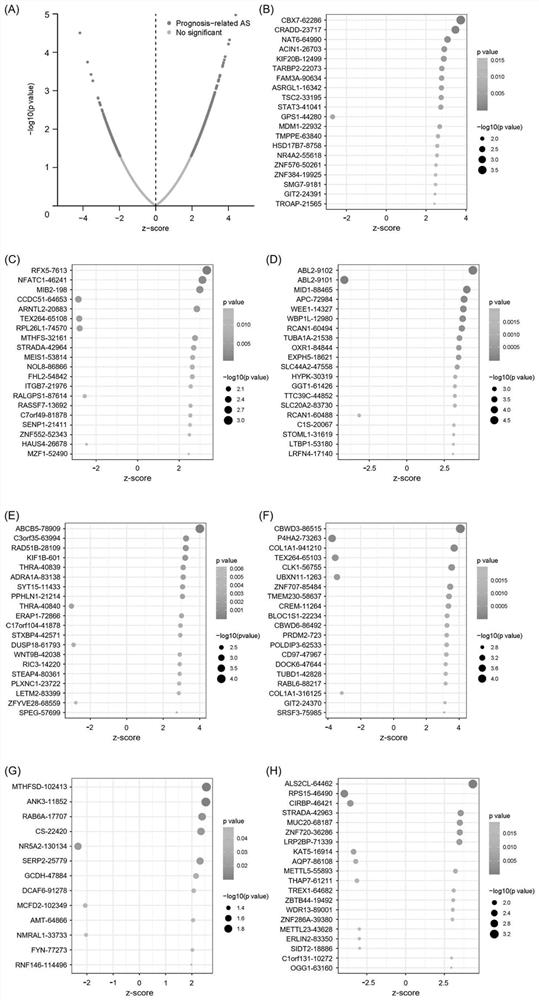Construction method and application of gastric cancer prognosis model based on alternative splicing events
A construction method, a variable technology, applied in the fields of biomedicine and medical informatics, which can solve the problems of the lack of clinical reference for the prognostic value of alternative splicing events, etc.
- Summary
- Abstract
- Description
- Claims
- Application Information
AI Technical Summary
Problems solved by technology
Method used
Image
Examples
Embodiment 1
[0051] Example 1: Analysis of Alternative Splicing Events in Gastric Cancer Samples
[0052] TCGA's SpliceSeq provides a map of alternative splicing events based on whole-transcriptome sequencing data (Ryan M, WongWC, Brown R, Akbani R, Su X, Broom B, Melott J and Weinstein J.TCGASpliceSeq acompendium of alternative mRNA splicing in cancer.Nucleic Acids Res. 2016;44(D1):D1018-22). More than 75% of the alternative splicing events in gastric cancer samples were downloaded from the SpliceSeq database, and the corresponding clinical data of gastric cancer patients were downloaded from the TCGA pan-cancer atlas database. Data and clinical data of alternative splicing events were confirmed and matched by TCGA ID, and only gastric cancer patients with both clinical follow-up and alternative splicing event data were finally included in this study. The clinical data of the patients with gastric cancer are shown in Table 1. For the process of data processing, see figure 1 . 48,141 a...
Embodiment 2
[0065] Example 2: Alternative splicing events associated with survival in gastric cancer
[0066] In the survival correlation analysis, 47 patients with an overall survival of less than 30 days were excluded, and then the remaining 368 patients were matched with the corresponding entries in the SpliceSeq database, 31 patients were missing more than 20% of the alternative splicing Events are excluded again. Therefore, a total of 337 patients were included in this study. After excluding alternative splicing events with standard deviation (SD) figure 2 ). Reactome was used to map the protein network interaction to explore the interaction between survival-related alternative splicing events and corresponding genes. image 3 The 20 most important survival-related genes among the 7 alternative splicing events are shown. It is worth noting that most of these alternative splicing events are associated with prognosis, and a gene may have two or more survival-related splicing events...
Embodiment 3
[0068] Construction of the prognostic model for patients with gastric cancer
[0069] Survival-related alternative splicing events were selected for LASSO and multivariate Cox analysis, and prognostic models were established according to AA, AD, AP, AT, ES, ME, and RI events. Subsequently, Kaplan-Meier analysis was employed to plot the survival rates over time for the prognostic models of the seven types of alternative splicing events. Then, the seven alternative splicing events were integrated to construct the final prognostic model. At the same time, the receiver operating characteristic curve (Receiver operating characteristic curve, ROC) was drawn to evaluate the effectiveness of the prognostic model, and a prognostic model was constructed to predict the clinical outcome of gastric cancer patients. LASSO and multivariate Cox analyzes were performed based on AA, AD, AP, AT, ES, ME and RI events ( Figure 5 ), developed seven prognostic models based on a single alternative...
PUM
 Login to View More
Login to View More Abstract
Description
Claims
Application Information
 Login to View More
Login to View More - R&D
- Intellectual Property
- Life Sciences
- Materials
- Tech Scout
- Unparalleled Data Quality
- Higher Quality Content
- 60% Fewer Hallucinations
Browse by: Latest US Patents, China's latest patents, Technical Efficacy Thesaurus, Application Domain, Technology Topic, Popular Technical Reports.
© 2025 PatSnap. All rights reserved.Legal|Privacy policy|Modern Slavery Act Transparency Statement|Sitemap|About US| Contact US: help@patsnap.com



